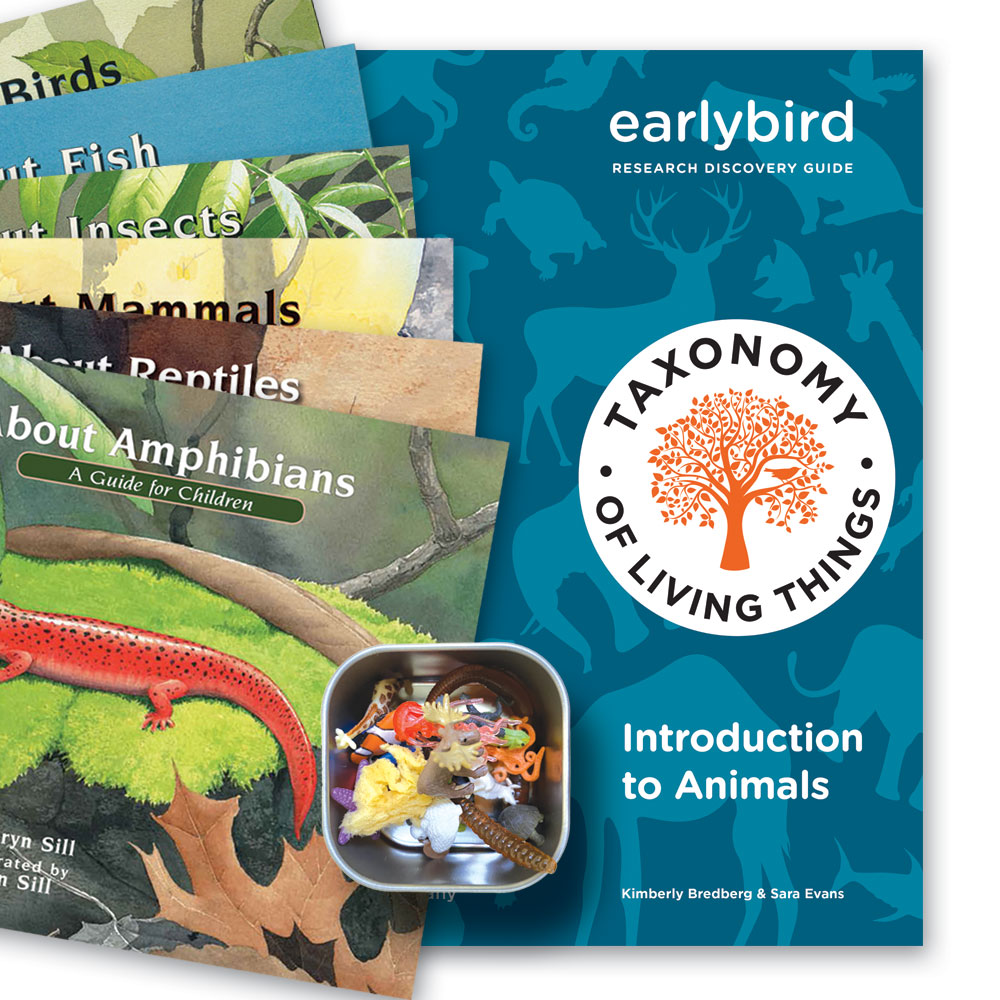
Who was? What is? Where? When? Why?
These are the questions that writers ask as they read for information. Research writing is a unique writing genre where students simultaneously gain knowledge and share ideas to inspire readers to do the same.
Research writing begins in 2nd grade with Taxonomy of living Things: Introduction to Animals. Over the course of 13 weeks, students will be guided into the work of learning about the animal kingdom, journaling their discoveries along the way. This opportunity to research will not only help them to gain knowledge, but also to springboard into the realm of early non-fiction note taking and the writing of complete factual sentences.
From there, students are ready to move into Research People in grades 3 through 6. A great place to begin research writing is by adding two Research People units to your 3rd grade back-to-school writing plan. The d’Aulaire books, published by our friends at Beautiful Feet Books, are just right for the 3rd grade entry to research writing. Take Lincoln for example, the quintessential embodiment of American possibility in his myth-like rise from rail-splitter to Chief Executive and Emancipator of the oppressed. What better way to start off learning to write a biographical essay—YES, a biographical essay!
Each of the Research People units takes the prep and guess work out of the process of writing the biographical essay, so you can enter the process as a mentor, inspiring your student to glean and gather ideas as they read for information.
Students will grow a vocabulary specific to each famous person, will review the plot of the weekly reading in a handful of complete sentences, and most importantly, learn to brainstorm and narrow down ideas in a topic wheal as they tackle constructing each of 3 body paragraphs over three weeks. On the fourth week, students will be lead into the construction of an opening and closing paragraphs (three sentences each) which will bookend the body paragraphs.
Utilizing the Research People units year after year, you will mentor and inspire as your students become increasingly independent. If you are familiar with the rich history and beauty of the d’Aulaire books, you might consider purchasing the Superset here. Moving into 4th through 6th grade, we have a wide selection of exceptional people for your student to write about—John Muir, Rosa Parks, and Mr. Rogers. Scroll through to discover.
When students arrive in the 7th and 8th grade, informational reading moves from biographical, historical research to science research. At this level, students have become very independent, and, because each self-contained unit is organized with a familiar supportive scaffolding, you will, once again, be supported in the role of writing mentor!
As with all research writing, students will begin with a great question: Have you met Carolus Linnaeus?
And it all begins with a simple question: What do stars and human beings have in common?
Elements, of course!
Everything you can imagine is made of elements — an octopus, a basketball, and each of us humans!
Blackbird & Co. research writing units are designed to foster inquiry, spark imagination and get students writing in the non-fiction realm.
~Kimberly






